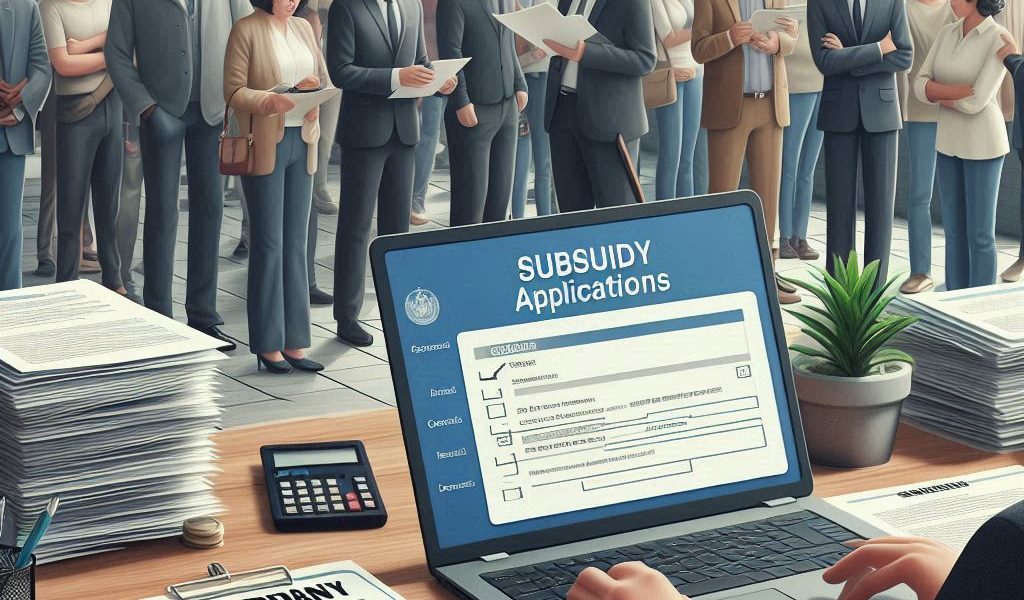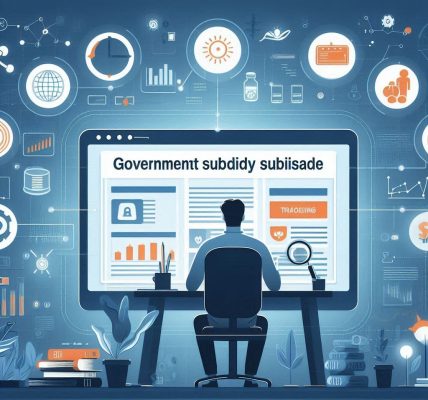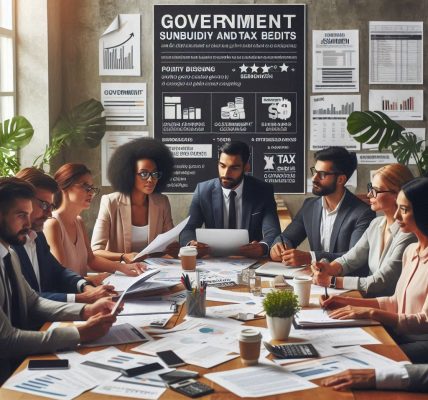Government subsidies are a great financial support system for individuals, businesses, and organizations looking to boost economic growth, promote social welfare, and encourage industry-specific development. However, many applicants make common mistakes while applying for these subsidies, leading to delays, rejections, or even legal complications.
In this detailed guide, we will walk you through the most common mistakes made during subsidy applications and how you can avoid them to maximize your chances of approval.
Why Do Government Subsidies Get Rejected?
Applying for government subsidies requires careful attention to detail, as authorities have strict eligibility criteria and documentation requirements. The most frequent reasons for rejections include:
✅ Incomplete documentation
✅ Failure to meet eligibility criteria
✅ Incorrect application details
✅ Late submission of applications
✅ Lack of proper follow-up
By understanding these pitfalls, applicants can take proactive steps to ensure their application gets approved without unnecessary hurdles.
Common Mistakes & How to Avoid Them
1. Not Checking Eligibility Criteria Properly
One of the biggest mistakes people make is applying for subsidies without verifying whether they meet the eligibility requirements.
🔴 Mistake: Many applicants assume they qualify based on general information, but each subsidy has specific conditions regarding income level, business type, region, and other factors.
✅ Solution: Before applying, thoroughly review the eligibility criteria on the official government website or contact the relevant authority. You can also consult with a financial advisor to confirm your eligibility.
2. Incomplete or Incorrect Documentation
Proper documentation is crucial in any subsidy application. Missing or incorrect documents can lead to immediate rejection.
🔴 Mistake: Applicants often fail to submit required paperwork, such as income proof, tax returns, project reports, or bank statements. In some cases, small errors in personal details (like name mismatches) can also cause delays.
✅ Solution: Prepare a checklist of required documents before starting the application process. Double-check all forms for accuracy and consistency. Keeping scanned copies of important documents on your computer can also help in case of resubmissions.
3. Providing Incorrect Information
Even minor mistakes in the application form can result in disqualification.
🔴 Mistake: Entering incorrect business details, tax ID numbers, or bank account information can lead to rejection.
✅ Solution: Always cross-check the information before submission. If the application requires manual entry, take extra care while filling out details. Avoid using third-party agents who may enter wrong details unless they are trusted professionals.
4. Missing Application Deadlines
Government subsidies often have strict deadlines, and missing them can mean waiting for another cycle.
🔴 Mistake: Many people delay their applications, thinking they have plenty of time, only to realize they missed the deadline.
✅ Solution: Mark important subsidy deadlines on your calendar. Set reminders at least a week before to gather documents and complete the application process on time.
5. Not Applying Through the Official Channel
Many fraudulent agents claim to help applicants secure subsidies but often charge high fees or provide false promises.
🔴 Mistake: Applying through unofficial websites or unauthorized middlemen can lead to fraud or scams.
✅ Solution: Always apply through official government portals such as:
Before submitting personal details, verify the authenticity of the website or agency.
6. Ignoring Follow-Ups After Submission
Many applicants assume their job is done once they submit the application, but this is a critical mistake.
🔴 Mistake: Not tracking the status of an application may result in missing out on updates, additional document requests, or approvals.
✅ Solution: After submitting the application, regularly check the status on the official portal. If there is no update, follow up with the concerned department via email or phone.
7. Applying for the Wrong Subsidy Program
Many people apply for the first subsidy they find without researching whether it truly suits their needs.
🔴 Mistake: Applying for a grant that doesn’t match your project or business needs can lead to rejection.
✅ Solution: Research different subsidy programs before choosing the best fit. Government websites categorize subsidies based on industries such as:
- Agriculture
- Small businesses (MSME)
- Startups
- Renewable energy
- Education
If unsure, seek expert advice to select the right subsidy.
8. Overlooking Terms & Conditions
Every government subsidy has terms and conditions that beneficiaries must follow.
🔴 Mistake: Many applicants fail to read the fine print, which could later result in compliance issues or even legal trouble.
✅ Solution: Carefully read the terms and conditions associated with the subsidy. Pay attention to fund usage restrictions, repayment clauses (if any), and reporting obligations.
How to Ensure a Successful Subsidy Application?
✅ Step 1: Research the Right Grant
Identify the most suitable subsidy that aligns with your project or business.
✅ Step 2: Prepare All Documents in Advance
Ensure you have tax records, business details, and identification proofs ready.
✅ Step 3: Cross-Check Your Application
Double-check all details for accuracy before submission.
✅ Step 4: Apply via the Official Government Portal
Avoid third-party agents unless they are certified consultants.
✅ Step 5: Follow Up Regularly
Check your application status and respond to any additional document requests promptly.
Final Thoughts
Applying for government subsidies can be a great way to gain financial support, but mistakes can cost you time, money, and opportunities. By carefully preparing your application, verifying details, and following the right procedures, you can avoid rejections and successfully claim the benefits you are entitled to.
If you are planning to apply for a government subsidy, start early, stay organized, and always refer to official sources to stay updated on guidelines and deadlines.
For more subsidy-related information, visit:
📌 https://www.india.gov.in
📌 https://www.msme.gov.in




